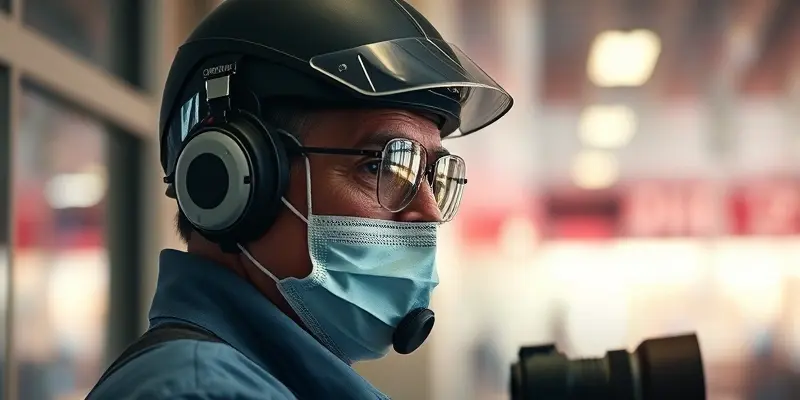Recovery & Injury: Your Ultimate Guide to Staying Strong, Healthy, and Motivated
Recovery isn’t just for the professionals. Whether you’re stepping into the gym for the first time or are powering through advanced athlete routines, taking your body’s repair process seriously is the secret sauce for sustainable progress. At Gympulse Club, our mission is to help every member—from amateur to pro—train smarter, bounce back faster, and enjoy their active lives to the fullest.
Why Recovery Matters for Every Athlete
Let’s start with the basics: muscle growth and strength gains happen after your training session, not during it. Every squat, press, or sprint breaks your tissues down a bit. Recovery allows them to rebuild stronger.
Think of a beginner who pushes a bit too hard—suddenly, they’re sidelined by aches that won’t quit. Or the advanced athlete frustrated by a nagging shoulder. In both cases, missing out on recovery sabotages progress and opens the door for overuse injuries like strains and tendinitis.
Effective Strategies for Recovery & Injury Prevention
So, how can you stack the odds in your favor?
1. Smarter Training Structure
- Program structured rest days and avoid training the same muscle groups on consecutive days.
- Use progression wisely: small, regular increases in load prevent overuse.
2. Prehabilitation & Mobility
- Regular mobility drills (think: hip openers, shoulder dislocates) can be game-changers.
- Integrate 5–10 minutes of prehab exercises—like band work or core stability moves—into your warm-up.
3. Active Recovery Techniques
- Try foam rolling and light cardio on off days to speed up muscle repair.
- Listen to your body: sharp pain is a warning, not a challenge to push harder.
Common Mistakes to Avoid
- Ignoring chronic soreness (“no pain, no gain” is a myth!).
- Skipping warmups and cooldowns.
- Doing too much, too soon after an injury.
For a detailed step-by-step approach, check out our injury recovery checklist to help you avoid common pitfalls and ensure a smooth comeback.
Nutrition: Fueling Repair and Bounce-Back
Muscle recovery starts in the kitchen. Here’s what science—and years of athlete experience—shows works best:
Key Elements:
- Aim for 1.6–2.2g protein per kg of bodyweight every day.
- Favor whole grains, fruits, and veggies for steady carbohydrate energy.
- Include omega-3s (salmon, walnuts, chia seeds) and plenty of water to manage inflammation.
Post-Workout Win: A shake or meal with a 3:1 carb-to-protein ratio kickstarts restoration. For example: a turkey sandwich with banana, or Greek yogurt with berries and oats.
Mindset: Staying Motivated When Setbacks Hit
Injury and forced downtime can be tough on your mindset. Remember, even champions face roadblocks!
How to Thrive Mentally:
- Set mini goals: Like regaining a pain-free squat or adding 5 degrees to your shoulder mobility.
- Use mental imagery: Visualize smooth movements and a healthy comeback by practicing visualization for healing.
- Lean on your team: Stay connected with gym buddies, trainers, or the Gympulse community—it’s easier together.
- Celebrate small wins: Every bit of progress counts, from an extra rep to pain-free range of motion.
Real-Life Tips & a Weekly Recovery Routine
Ready to put it all together? Here’s a sample week for any fitness fan:
| Day | Focus | Example Strategy ||———|——————————–|—————————————|| Monday | Strength training (upper) | Dynamic warmups, finish with foam roll|| Tuesday | Mobility & Active Recovery | 30 min brisk walk, hips/shoulders || Wednesday| Strength training (lower)+Core| Glutes, squats, anti-rotation moves || Thursday| Recovery Day | Yoga, light swimming || Friday | Strength training (full body) | Use different movement angles || Saturday| Cardio + Prehab | Cycling, banded shoulder stability || Sunday | Rest & Nutrition Check-in | Hydrate, meal prep, mindfulness |
Pro tip for all levels: Keep a simple journal for soreness, sleep, and energy. Patterns will help you fine-tune your recovery.
Conclusion: Stronger, Healthier, Happier—Together
Recovery isn’t a sign of weakness—it’s the backbone of long-term fitness. Whether you’re aiming for your first 5K, a new PR, or simply a pain-free week, smart recovery strategies will help you move forward. Want more support? Share your story or question with us below—the Gympulse community is here to help you thrive!
About the author: With a decade in sports training and wellness, I’ve seen time and again that prioritizing recovery is what sets successful athletes apart. Don’t skip it—embrace it!

